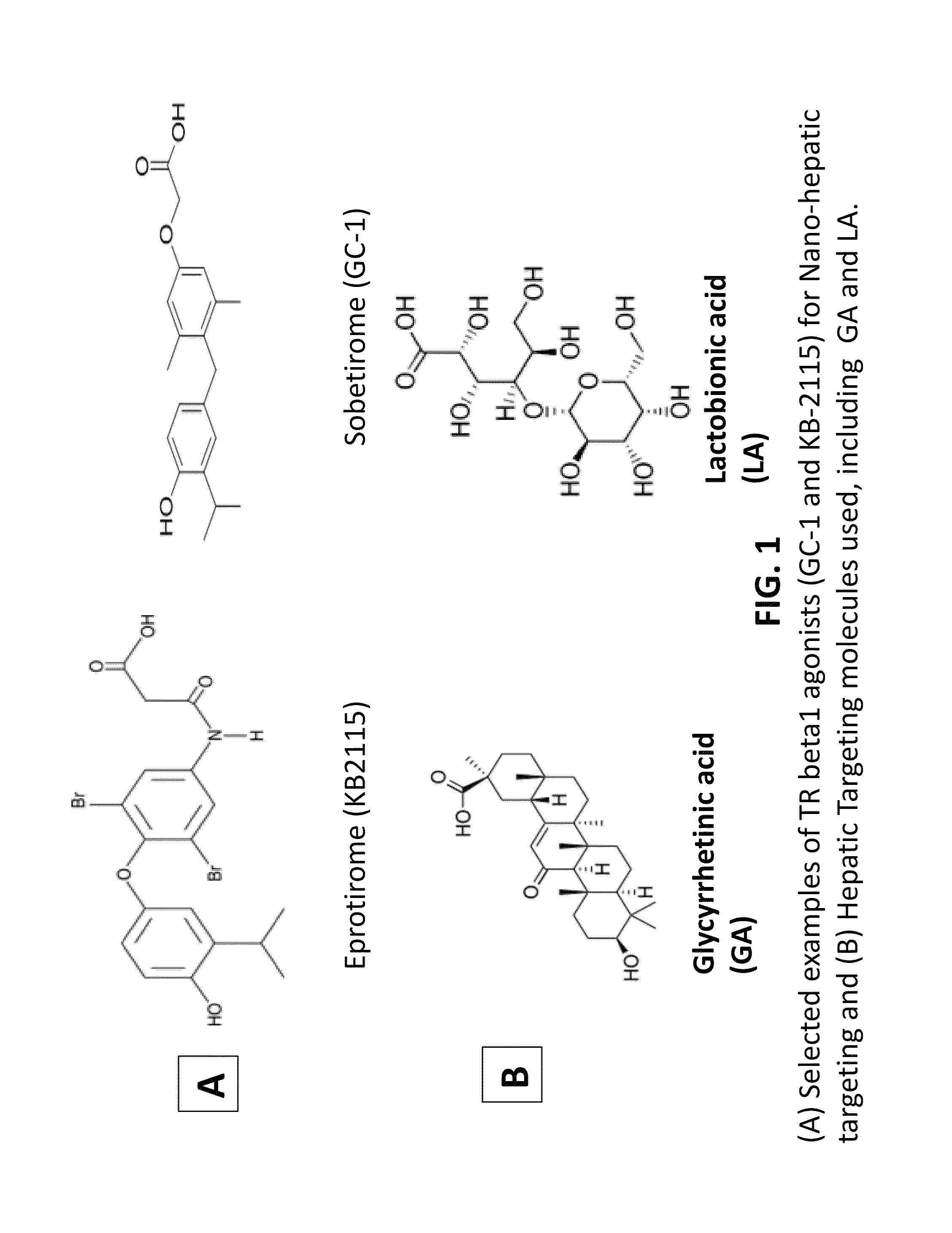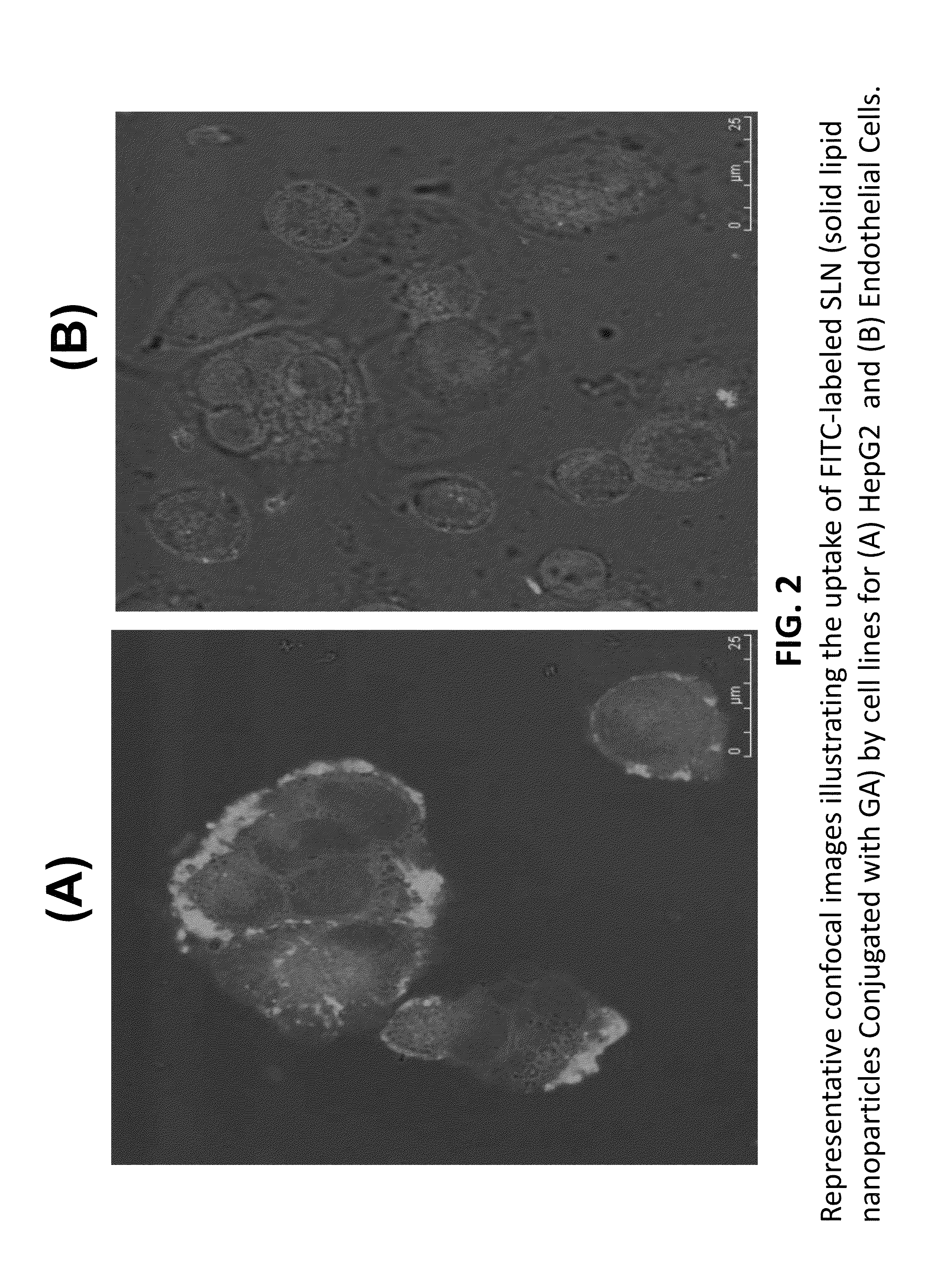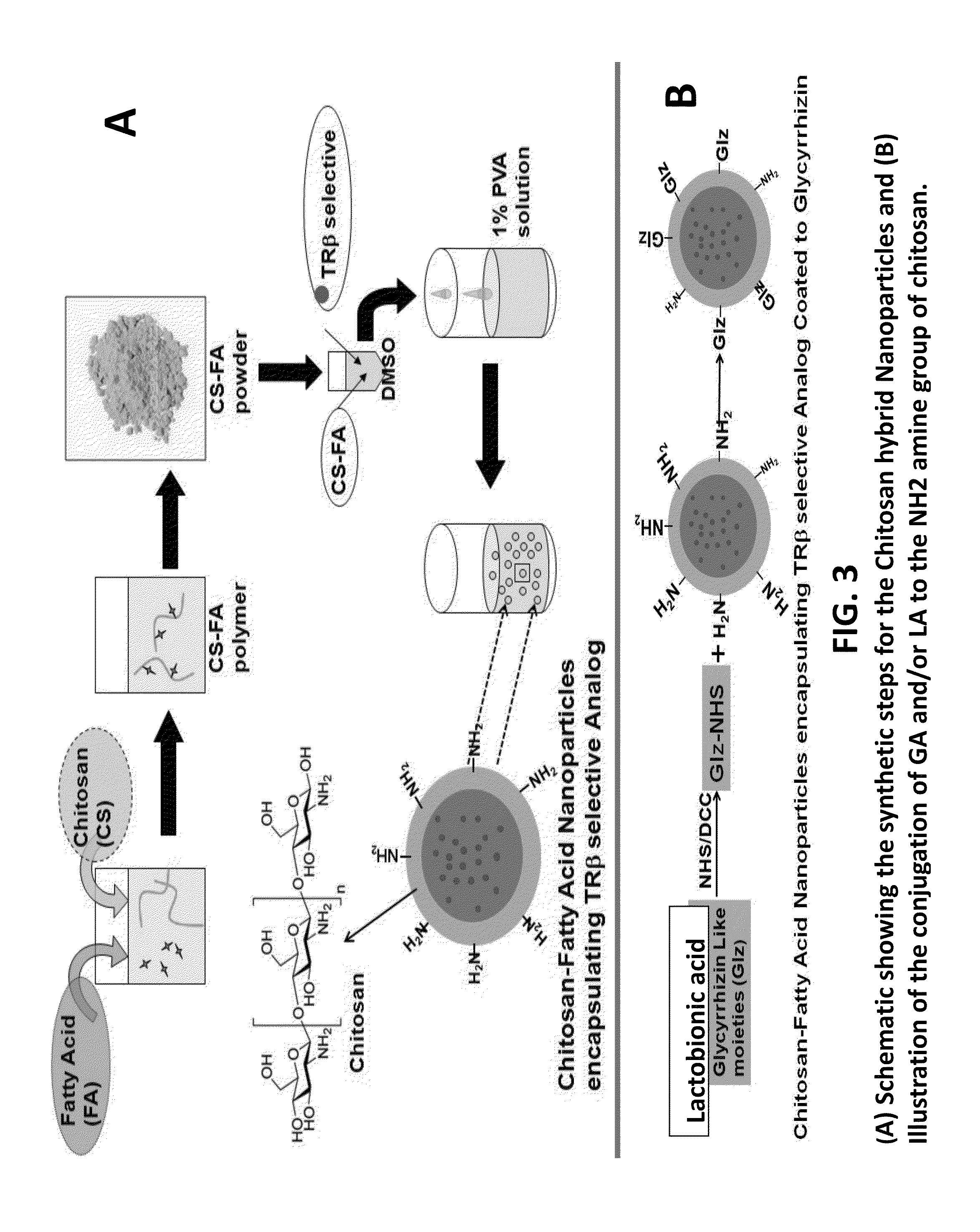Nanoformulation and methods of use of thyroid receptor beta1 agonists for liver targeting
- Summary
- Abstract
- Description
- Claims
- Application Information
AI Technical Summary
Benefits of technology
Problems solved by technology
Method used
Image
Examples
example 1
Cell Based Transactivation Assay for TRβ
[0030]A standard TRβ cell based assay was used. The TRβ Reporter Assay System provides constitutive, high-level expression of Human Thyroid Hormone Receptorβ, a ligand-dependent transcription factor. Because these cells incorporate a responsive luciferase reporter gene, quantifying expressed luciferase activity provides a sensitive surrogate measure of TRβ1 activity in the treated cells.
example 2
Test for LDLR Up-Regulation
[0031]Use of a recombinant assay that demonstrates that expression of LDLR) constructs in HEK-293 cells resulted in the high expression level of intracellular LDLRs. The expression vector of human LDLR was constructed under the control of the cytomegalovirus promoter-enhancer (pCMV-LDLR). These constructs were used to transiently transfect mammalian cells, and cells were subjected to SDS-PAGE and immunoblot analysis using an LDLR antibody. The data shows that cells that were transfected with only pCMV-LDLR show expression of the LDLR in the cells. Using this assay, compounds were tested for their ability to reduce the degradation of the LDLR. HEK-293 cells grown in 96-well plates overnight and transfected with LDLR were used. Compounds dissolved in DMSO or vehicle were added to the culture media, and incubated for 24-48 hours. The cells were then lysed. Both cell lysate and supernatant are subjected to quantitation using the above immunoassay. Compounds th...
example 3
Test for Cell Viability and Hepatic Uptake
[0033]HEK-293T cells or HepG2 cells were seeded in 96-well plates in a cell media containing 10% Fetal Bovine Serum and incubated overnight at 37° C. Compounds at various concentrations were added to cells after 24 hours and incubated for an additional 48 hours. Cell viability was assayed using Resazurin (Sigma 199303) and an Envision 2101 Multi-label plate reader.
[0034]Hepatic uptake in real time was be tested by confocal imaging and determination of levels of TRβ1 agonist in the HepG2 cells by LC / MS / MS method.
[0035]FIG. 2 depicts representative confocal images illustrating the uptake of FITC-labeled solid lipid nanoparticles conjugated with Glycyrrhetinic acid (GA) by cell lines for (A) HepG2 and (B) endothelial cells. FIG. 2 illustrates differential hepatic uptake in HepG2 cells versus other cells for Nano-hepatic targeting of TR beta1 agonist encapsulated into Solid Lipid Nanoparticles (SLN) and conjugated with Glycyrrhetinic acid (GA), ...
PUM
| Property | Measurement | Unit |
|---|---|---|
| Dimensionless property | aaaaa | aaaaa |
| Weight | aaaaa | aaaaa |
| Density | aaaaa | aaaaa |
Abstract
Description
Claims
Application Information
 Login to View More
Login to View More - R&D
- Intellectual Property
- Life Sciences
- Materials
- Tech Scout
- Unparalleled Data Quality
- Higher Quality Content
- 60% Fewer Hallucinations
Browse by: Latest US Patents, China's latest patents, Technical Efficacy Thesaurus, Application Domain, Technology Topic, Popular Technical Reports.
© 2025 PatSnap. All rights reserved.Legal|Privacy policy|Modern Slavery Act Transparency Statement|Sitemap|About US| Contact US: help@patsnap.com



